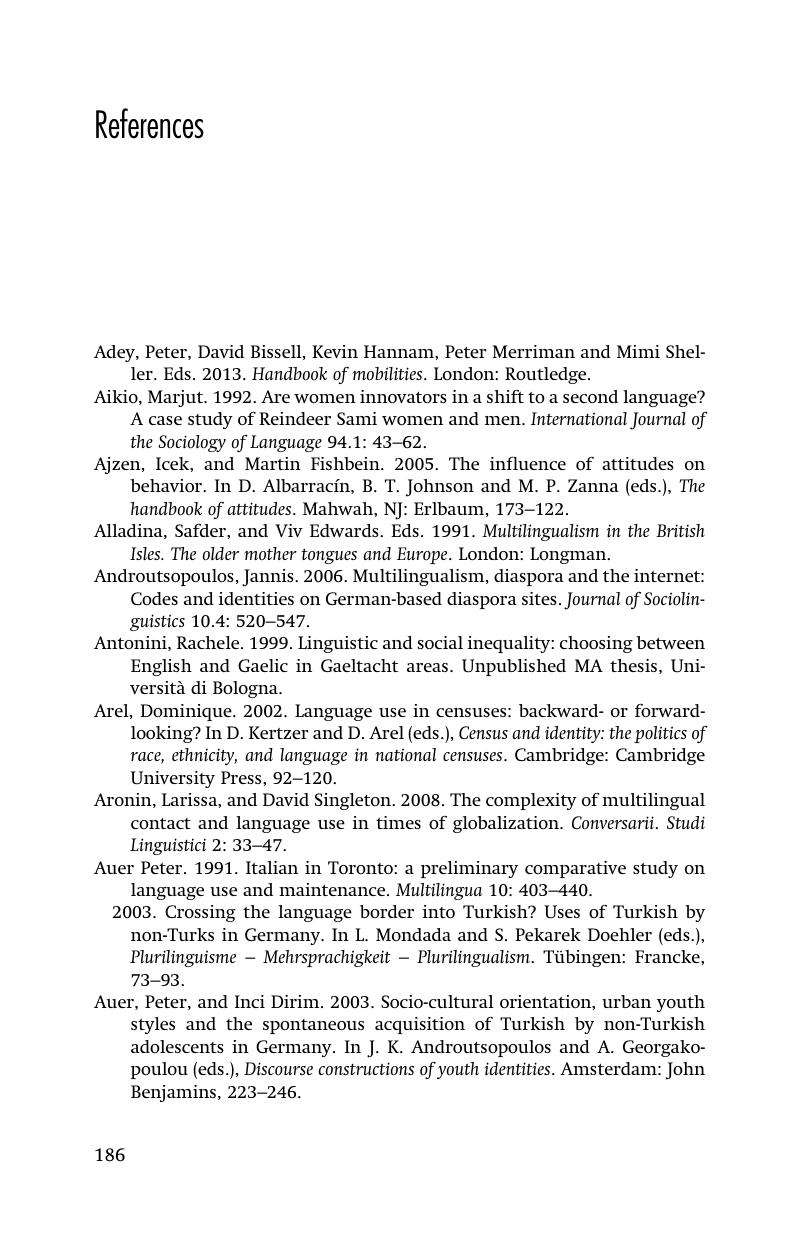Book contents
- Frontmatter
- Dedication
- Contents
- Acknowledgements
- Introduction
- PART I HISTORY, CONCEPTS, CONTEXTS AND APPROACHES
- PART II INVESTIGATING LANGUAGE MAINTENANCE AND SHIFT: COLLECTING AND ANALYSING DATA
- PART III IDENTIFYING AND UNDERSTANDING TRENDS AND PATTERNS IN THE DYNAMICS OF LANGUAGE MAINTENANCE AND SHIFT
- PART IV LANGUAGE MAINTENANCE EFFORTS AND REVERSING LANGUAGE SHIFT
- PART V FUTURE DEVELOPMENTS IN THE STUDY OF LANGUAGE MAINTENANCE AND SHIFT
- References
- Index
- References
References
Published online by Cambridge University Press: 05 August 2016
- Frontmatter
- Dedication
- Contents
- Acknowledgements
- Introduction
- PART I HISTORY, CONCEPTS, CONTEXTS AND APPROACHES
- PART II INVESTIGATING LANGUAGE MAINTENANCE AND SHIFT: COLLECTING AND ANALYSING DATA
- PART III IDENTIFYING AND UNDERSTANDING TRENDS AND PATTERNS IN THE DYNAMICS OF LANGUAGE MAINTENANCE AND SHIFT
- PART IV LANGUAGE MAINTENANCE EFFORTS AND REVERSING LANGUAGE SHIFT
- PART V FUTURE DEVELOPMENTS IN THE STUDY OF LANGUAGE MAINTENANCE AND SHIFT
- References
- Index
- References
Summary

Information
- Type
- Chapter
- Information
- Language Maintenance and Shift , pp. 186 - 207Publisher: Cambridge University PressPrint publication year: 2016
